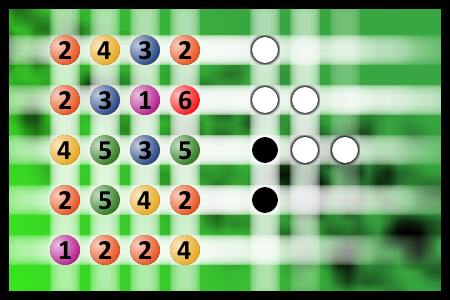Find the right combination
The computer chose a secret code (sequence of 4 digits from 1 to 6). Your goal is to find that code. Black circles indicate the number of hits on the right spot. White circles indicate the number of hits on the wrong spot.Correct answers: 61
The first user who solved this task is Irena Katic Kuzmanovic.
#brainteasers #mastermind

Man Overboard
An couple were on a cruise and it was really stormy. They were standing on the back of the ship watching the moon, when a wave came up and washed the man overboard. They searched for days and couldn't find him. So the captain sent the woman back to shore with the promise that he would notify her as soon as they found something.
Three weeks went by and finally the woman got a fax from the ship. It read: "Ma'am, sorry to inform you, we found your husband dead at the bottom of the ocean. We hauled him up to the deck and attached to his back end was an oyster and inside the oyster was a pearl worth $50,000....please advise."
The woman faxed back: "Send me the pearl and re-bait the trap."

